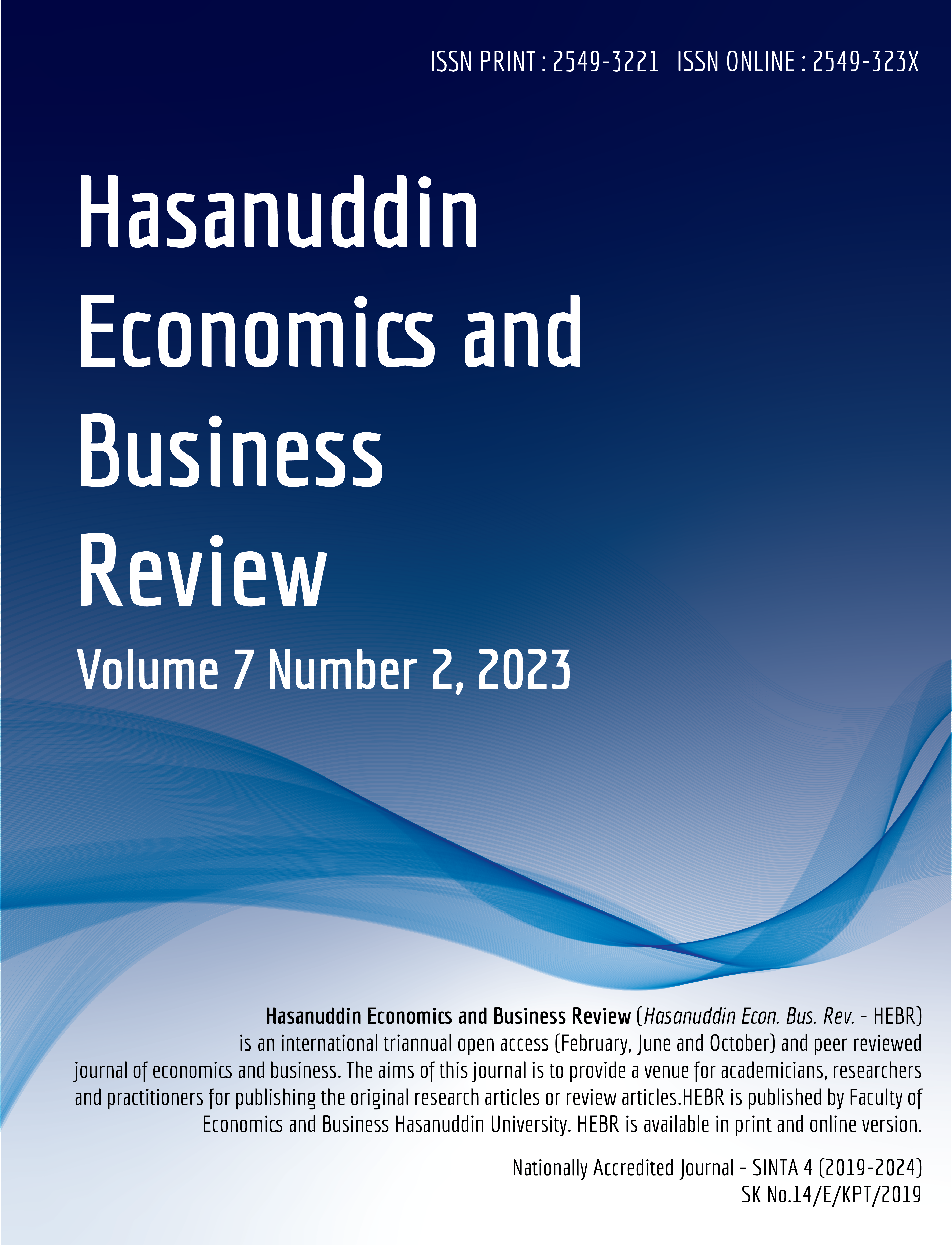Abstract
Financial technology is very useful in facilitating financial transactions worldwide. It was created to make getting funds and managing finances easier, which can improve people’s welfare. However, it also poses a threat in the form of loans from financial technology lending companies that are not licensed and illegally operate so that customers can be bound by huge interest rates and terrorized by debt collectors. Therefore, this study aims to analyze literacy about financial technology and demographic factors that affect welfare. The analysis results show that most respondents are still ignorant or do not understand the benefits of fin-tech for improving their welfare, and the respondents’ welfare is only affected by age. Although 92% of respondents have savings, these savings do not use fin-tech. Fin-tech is still seen as something that plunges like a shark loan trap, so most respondents still avoid fin-tech for their financial management. Respondents still do not use fin-tech optimally and urgently need education and socialization related to fin-tech.
References
Asosiasi Fintech Indonesia. 2015. Handbook Fintech Keuangan Pribadi.
Bank Indonesia. Edukasi Perlindungan Konsumen: Produk dan Jasa Fintech. https://www.bi.go.id/id/edukasi-perlindungan-konsumen/edukasi/produk-dan-jasa-sp/fintech/Pages/default.aspx
Bank Indonesia. 2018. Teknologi Finansial. https://www.bi.go.id/id/sistem-pembayaran/fintech/Contents/default.aspx
Batunanggar, S. (2019). Fintech Development and Asian Development Bank Institute. ADBI Working Paper Series FINTECH, 1014.
Chudzian, J., Anioła-Mikołajczak, P., Pataraia, L. (2015), Motives and attitudes for saving among young Georgians, Economics and Sociology, Vol. 8, No 1, pp. 165-188. DOI: 10.14254/2071- 789X.2015/8-1/13
Chen, F., Jiang, G., & Gu, M. (2021). Household savings and subjective wellbeing: Evidence from China. Journal of Consumer Affairs.
El Bourainy, M., Salah, A., & Sherif, M. El. (2021). Assessing the Impact of Financial Inclusion on Inflation Rate in Developing Countries. April 2013, 397–424. https://doi.org/10.4236/jss.2021.91030
Fintech Singapore. (2020). Indonesia Fintech Report 2020. 1–33. https://fintechnews.sg/wp-content/uploads/2020/12/Fintech-Indonesia-Report-2020.pdf
Ghozali. Imam. 2017. Ekonometrika dengan IBM SPSS. Universitas Diponegoro.
Grace-Martin, Karen. 2013. Can a Regression Model with a Small R-Squared Be Useful?. The An alysis Factor. https://cpb-us-w2.wpmucdn.com/blog.uwgb.edu/dist/7/17/files/2013/11/Can-a-Regression-Model-with-a-Small-R-squared-Be-Useful_.pdf
Gujarati, Damodar, N dan Dawn C. Potter. 2017. Basic Econometrics. Edisi kelima. McGraw Hill.
Shin, H. S., Gambacorta, L., Frost, J., Doerr, S., & Chen, S. (2021). The Fintech Gender Gap. SSRN Electronic Journal, 931. https://doi.org/10.2139/ssrn.3799864
Otoritas Jasa Keuangan. 2021. Financial Technology-P2P Lending. https://www.ojk.go.id/id/kanal/iknb/financial-technology/default.aspx
Otoritas Jasa Keuangan. Financial Technology: OJK Siapkan Regulasi Dan Tim Pengembangan Ekonomi Digital. https://sikapiuangmu.ojk.go.id/FrontEnd/CMS/Article/338
Panori, A., & Psycharis, Y. (2019). Exploring the links between education and income inequality at the municipal level in Greece. Applied Spatial Analysis and Policy, 12(1), 101-126.
Rode, S. (2017). The Effect of Education on Income and Nature of Employment for the Informal Sector Workers in Mumbai Metropolitan Region. Management Research and Practice, 9(2), 27.
Saidi, K., & Mongi, C. (2018). The effect of education, R&D and ICT on economic growth in high income countries. Economics Bulletin, 38(2), 810-825.
Van Vu, H. (2020). The impact of education on household income in rural vietnam. International Journal of Financial Studies, 8(1), 11.
Authors who publish in this journal agree to the following terms:
- The journal holds the copyright for each article published with work licensed simultaneously under a Creative Commons Attribution 4.0 International License, which allows others to share the work with an acknowledgement of the authorship and early publication of the work in this journal.
- Authors must agree to the copyright transfer agreement by checking the Copyright Notice column at the initial stage when submitting the article.

